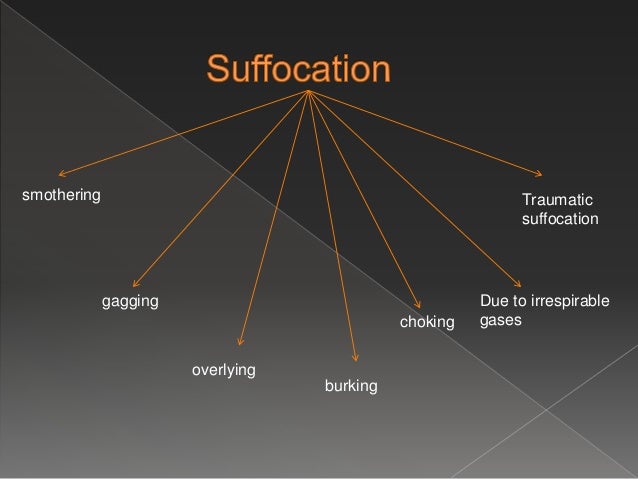How People Die: Suffocation
Published .

There are numerous ways a person can be suffocated (the process of asphyxiation). Sometimes there is nothing structurally wrong with the airway, but something wrong with the air itself (low oxygen environment, poison gases). Perhaps the patient is suffocating because the there is a problem not with the airway, but the lungs. An infection of the lungs (or lining of the lungs) could coat the lungs with mucous preventing the patient from being able to process the oxygen taken into their lungs. The blood vessels in the alveoli that receive the oxygen from the air could be distended due to heart failure. Excess fluid (like vomit, water, blood) in the lungs creating a barrier between the lungs and the blood vessels of the pulmonary capillaries could result in suffocation.
A lot can happen to lungs, but if the patient overdoses on a narcotic (medication derived from opium) which suppresses their respiratory drive, the patient will eventually just stop breathing. Various poisonings can also result can also result in suppressing the respiratory drive. A number of medical conditions will constrict the airway circuit or diminish the amount of air that can eventually reach the lungs. Injuries to the neck and chest can result in suffocation.
Unconscious patients can lose the ability to protect their own airway, which can result in a foreign body airway obstruction.
